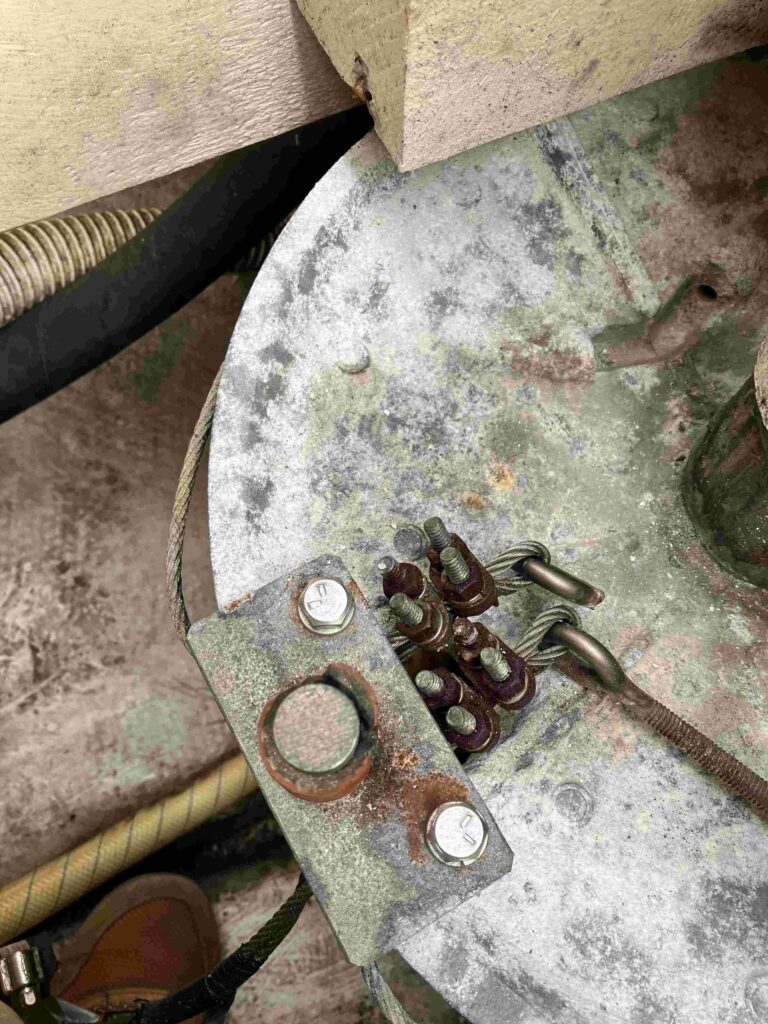With a working engine, we could leave the dock for the first time in a long time. We did a quick trial run, and an overnight raft up with P-dock friends in Poulsbo. No problems. So we decided to join the Sloop Tavern Yacht Club for a Memorial Day weekend cruise to Mystery Bay.
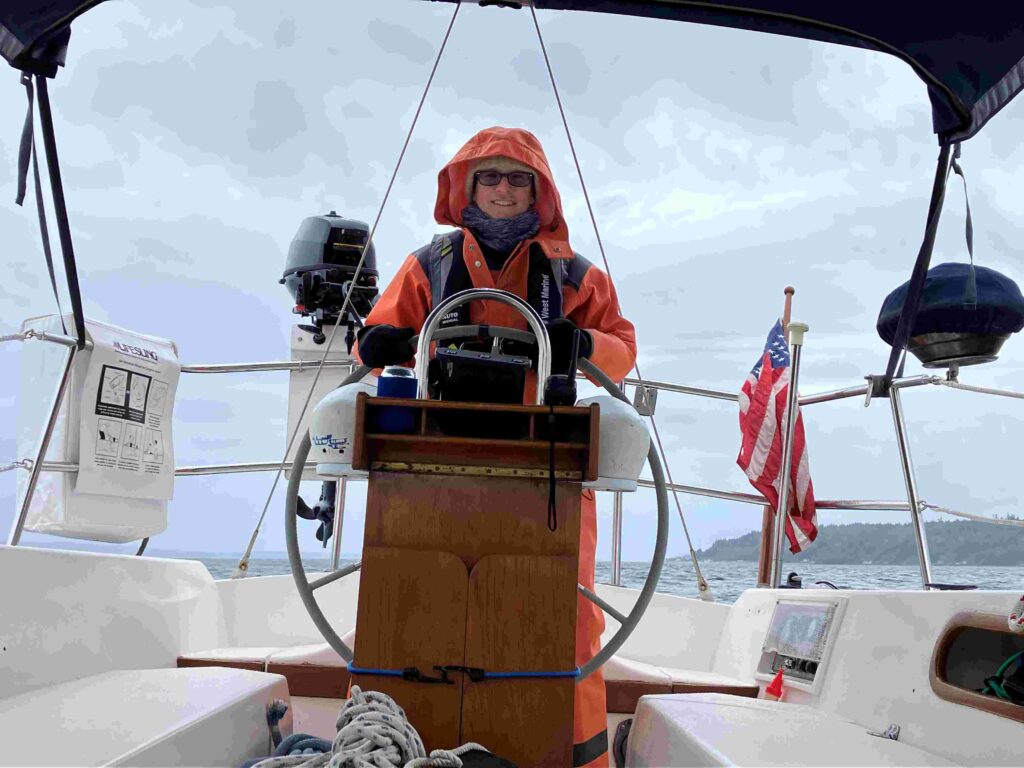
The Mystery Bay cruise included a goat farm tour (cheese tasting included), wine tasting at Marrowstone Vineyards, and a tractor parade in the bustling metropolis of Nordland.
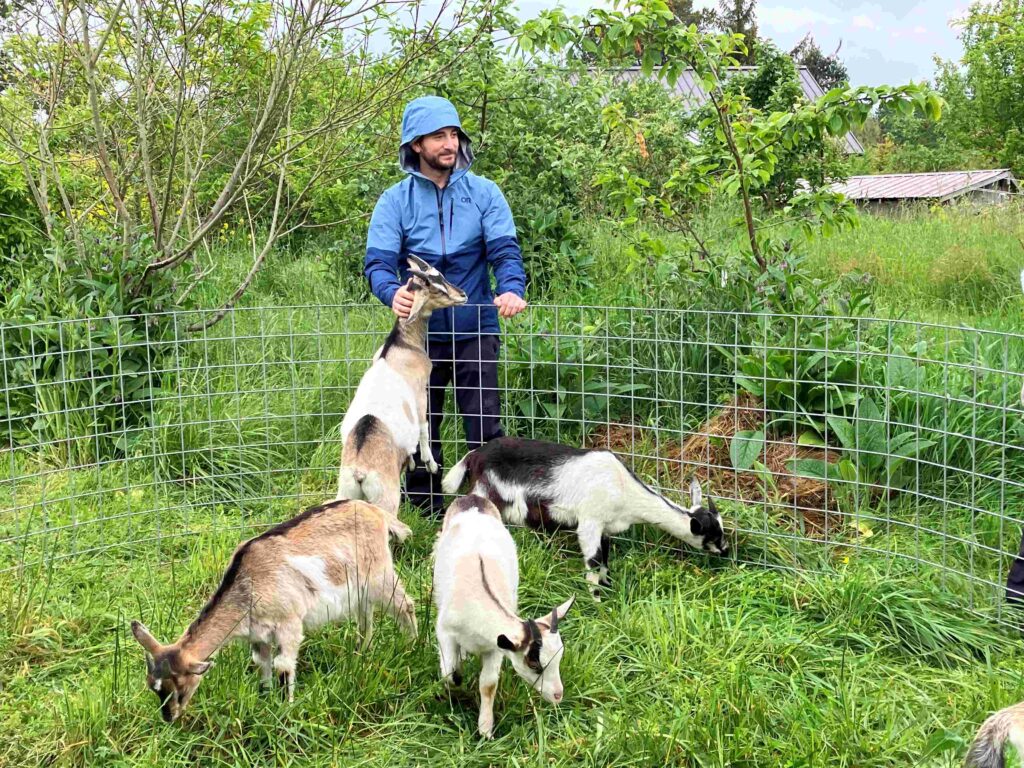
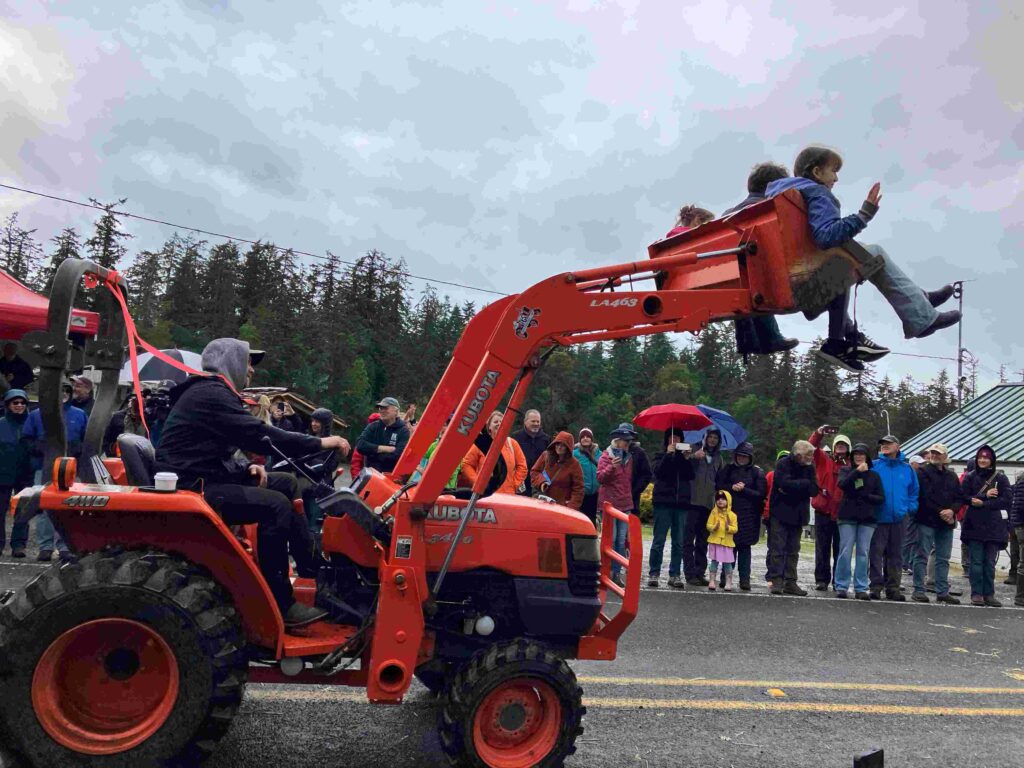
The sails work too.
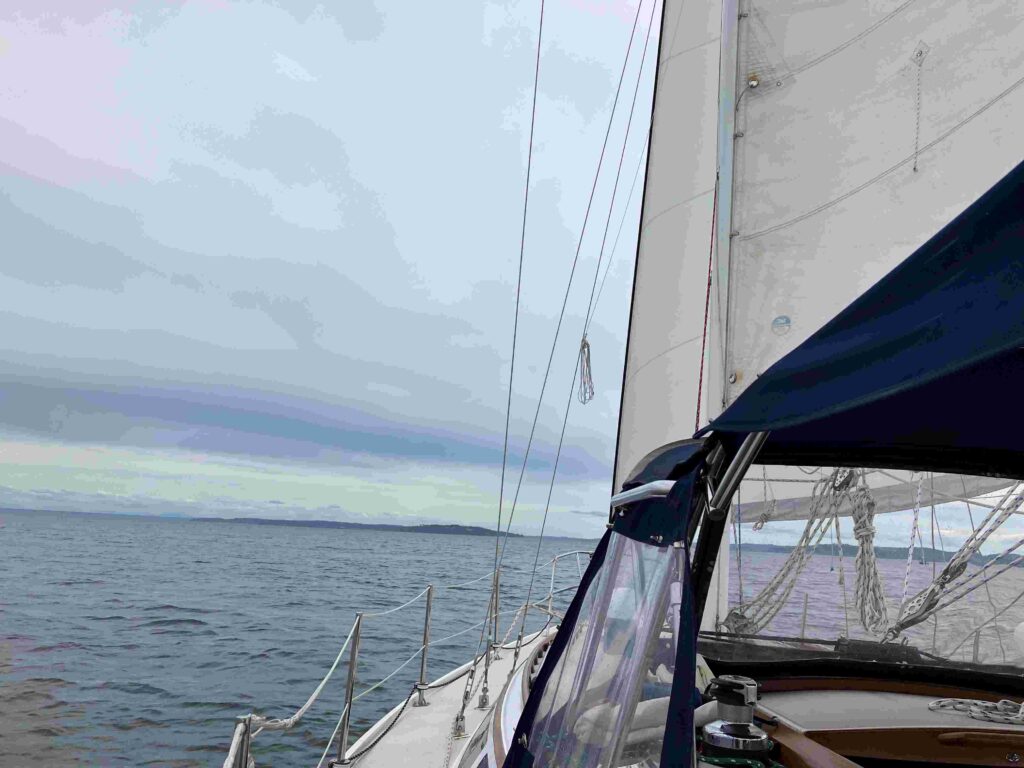
Our absence from the dock was noted, and one of the local sea lions took advantage of the peace and quiet.
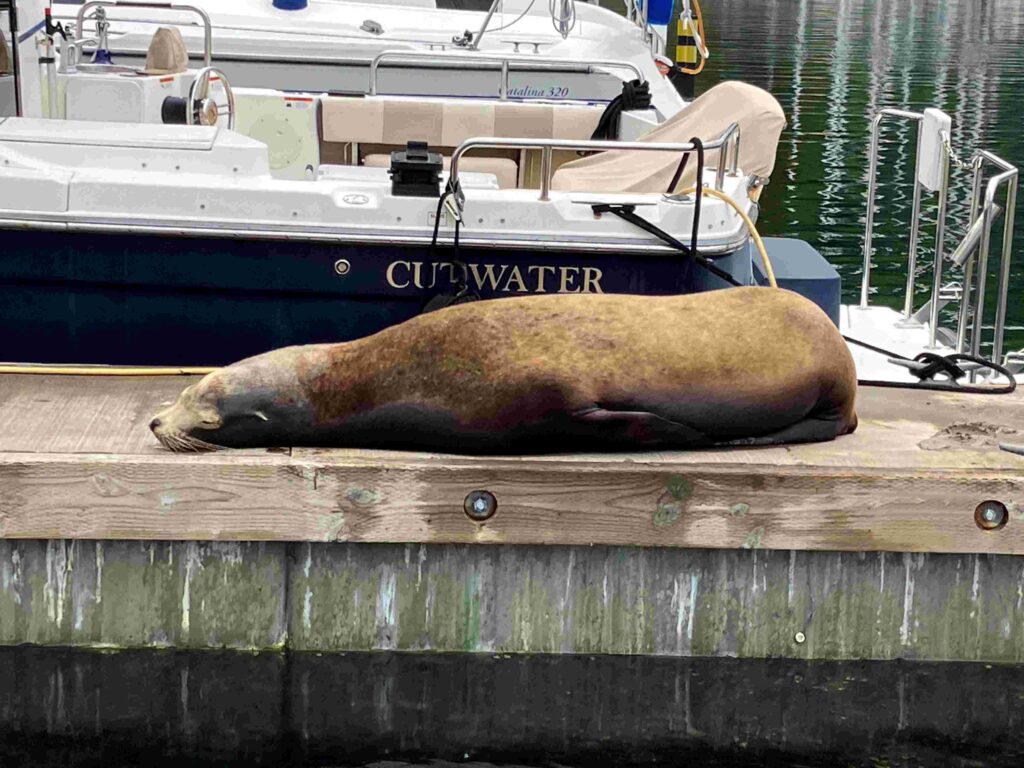
The weather improved, and we turned around and headed north again. This time we headed for the San Juan Islands to meet up with some of our friends from Anacortes. Our first stop was Crescent Harbor, on Saratoga Passage (between Whidbey Island and the mainland.
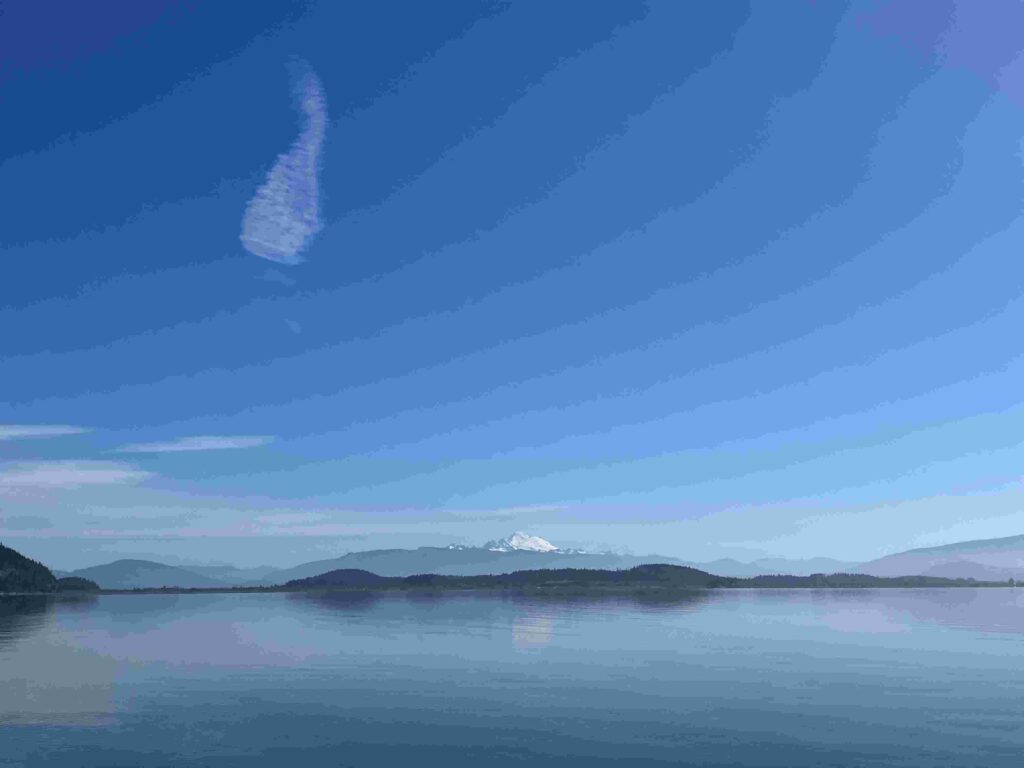
After spending a night in Cornet Bay to wait for slack tide in Deception Pass, we kept heading north. Along the way, we visited our dock neighbor Terry in Skyline Marina, Troy in Roche Harbor, and Mark & Sue on Lopez Island. One of the iconic anchorages in the San Juans is Echo Bay on Sucia Island, where we met up with another Anacortes dock neighbor, Dan.
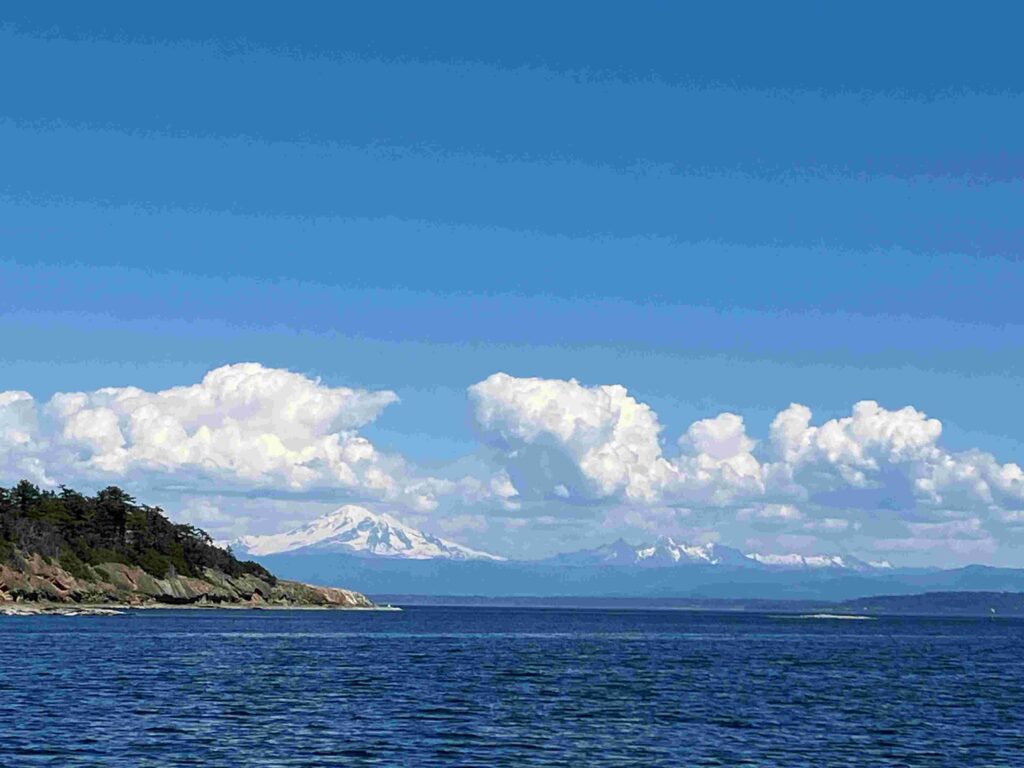
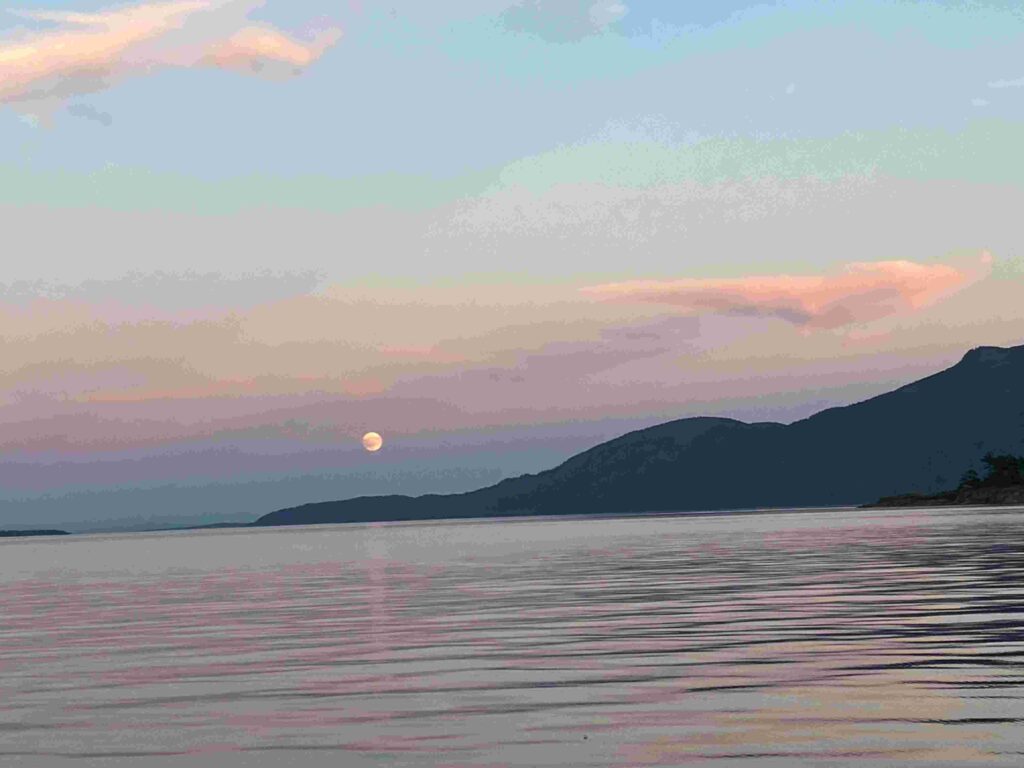
While sitting at anchor, we saw orcas in the channel between Sucia and Matia Islands. Later that afternoon, they popped up in Echo Bay, not far from where we were anchored. The cove at the west end of Matia Island has a couple of mooring balls and a small dock that we had eyed on past cruises. It always looked like a great spot to stop, but the mooring balls and dock were always full. This time we got one of the mooring balls, and Dan found a spot at the dock.
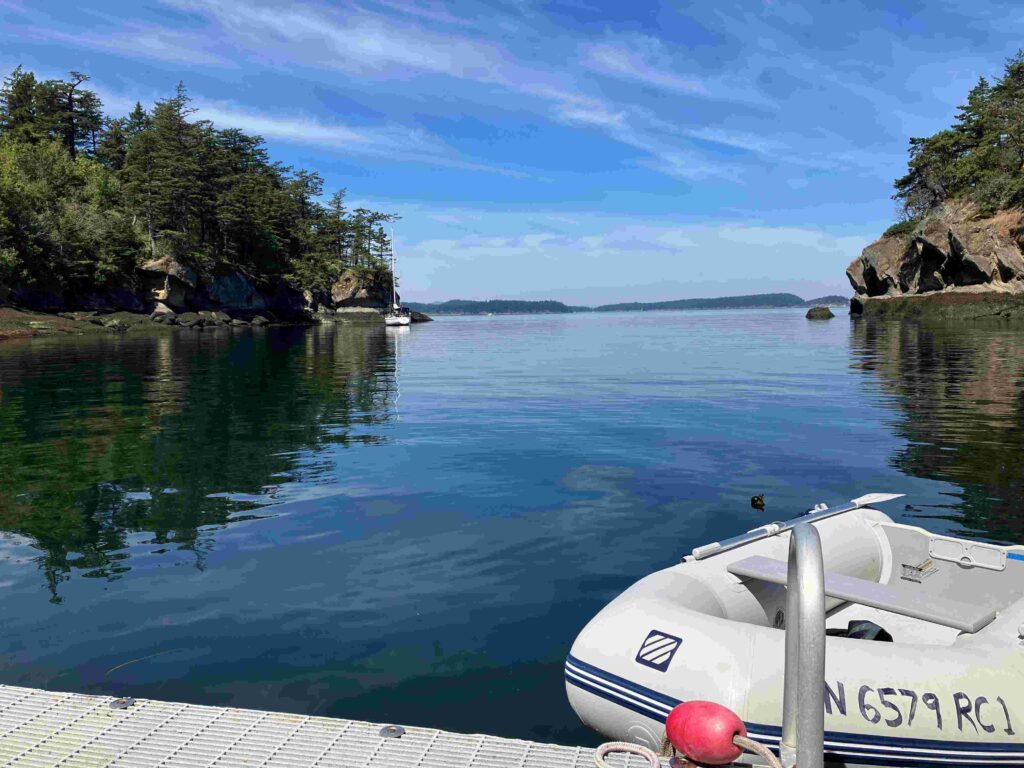
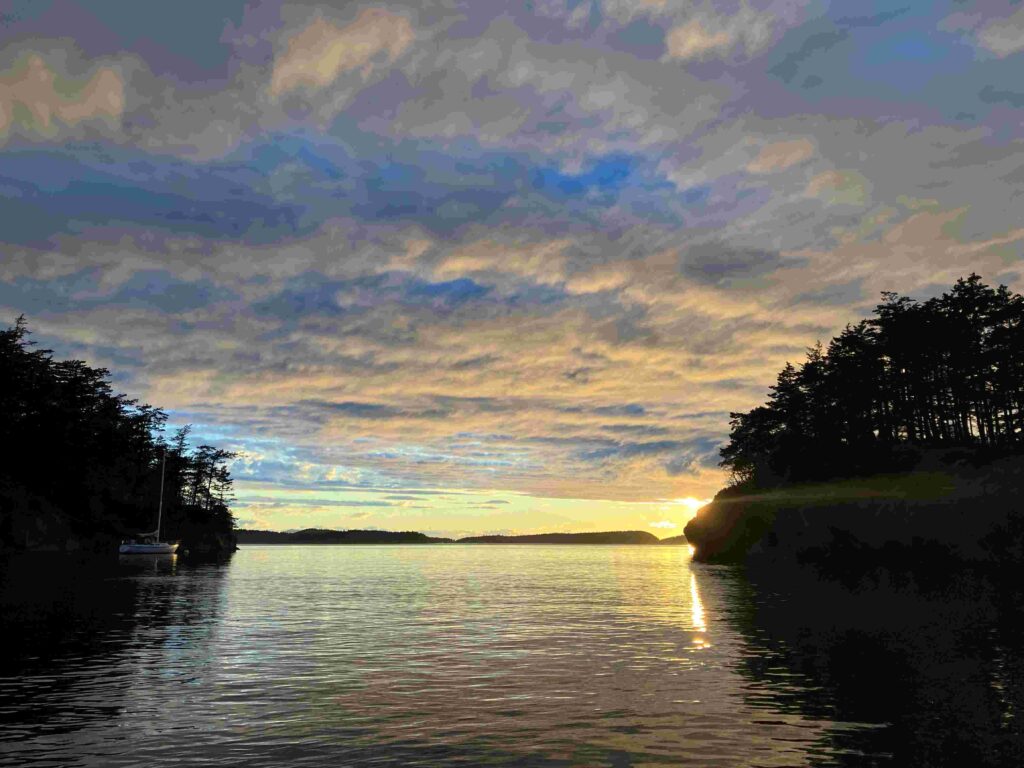
For the return trip, we took advantage of a favorable tide running south in Rosario Strait. Unfortunately, the weather turned ugly, with a strong wind opposing the current. While we were bouncing in the chop, the engine started sputtering like it was starved for fuel, and then it died. After hoisting the sails, we checked the Racor (filter/fuel-water separator), which was clogged with black crud. Thankfully, we had a couple of spare filter elements, and a quick change got the engine running again…briefly. The chop had stirred up all the crud that had settled in the bottom of the fuel tank since the boat was built (1986), and another fresh filter wasn’t going to do the trick. We sailed toward the nearest marina, our old home Cap Sante in Anacortes, and almost made it before the wind died and we had to call for a tow.
Using our endoscope camera, we looked through the hole for the heater fuel uptake on the top of the diesel tank. The bottom of the tank was thick with sludge, and there was no way we could clean it out–the tank didn’t have any inspection ports. Instead, we rigged up a “temporary auxiliary fuel tank” by cutting holes in the top of a jerry can and inserting the engine uptake and return lines.
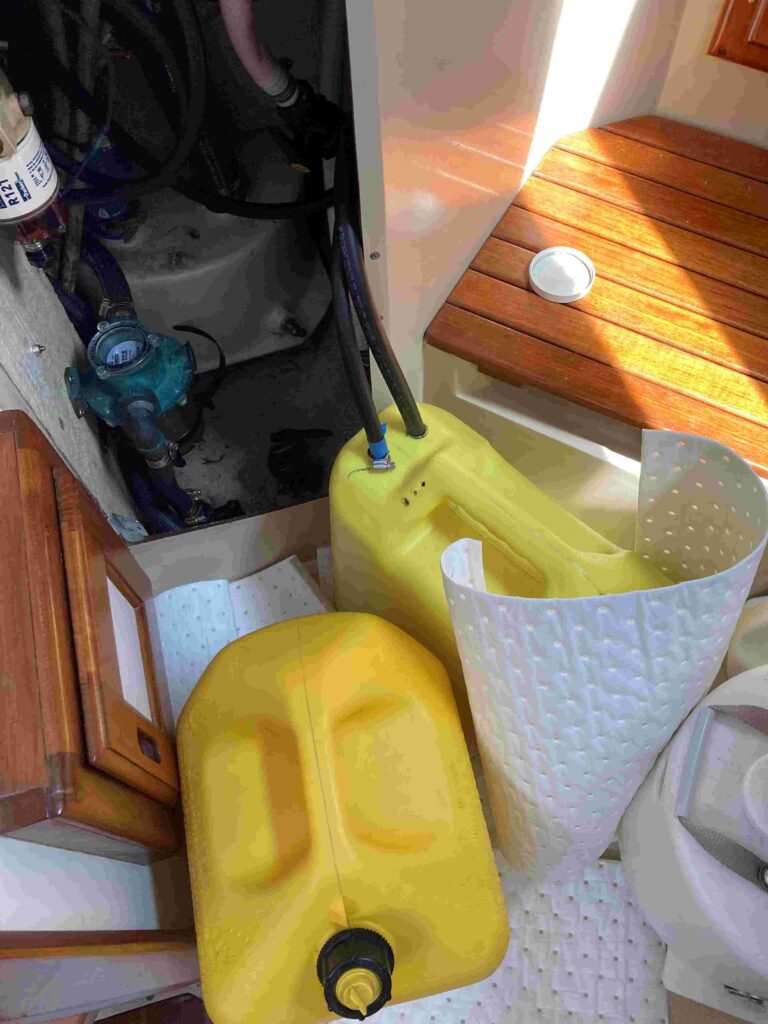
With a couple of extra jerry cans of diesel and a favorable current, we made it back to Seattle.
Luckily for us, Catalina made the fuel tank fairly accessible. We pulled it out, took it to a fuel tank fabrication shop, and had them make a new one (with inspection ports).

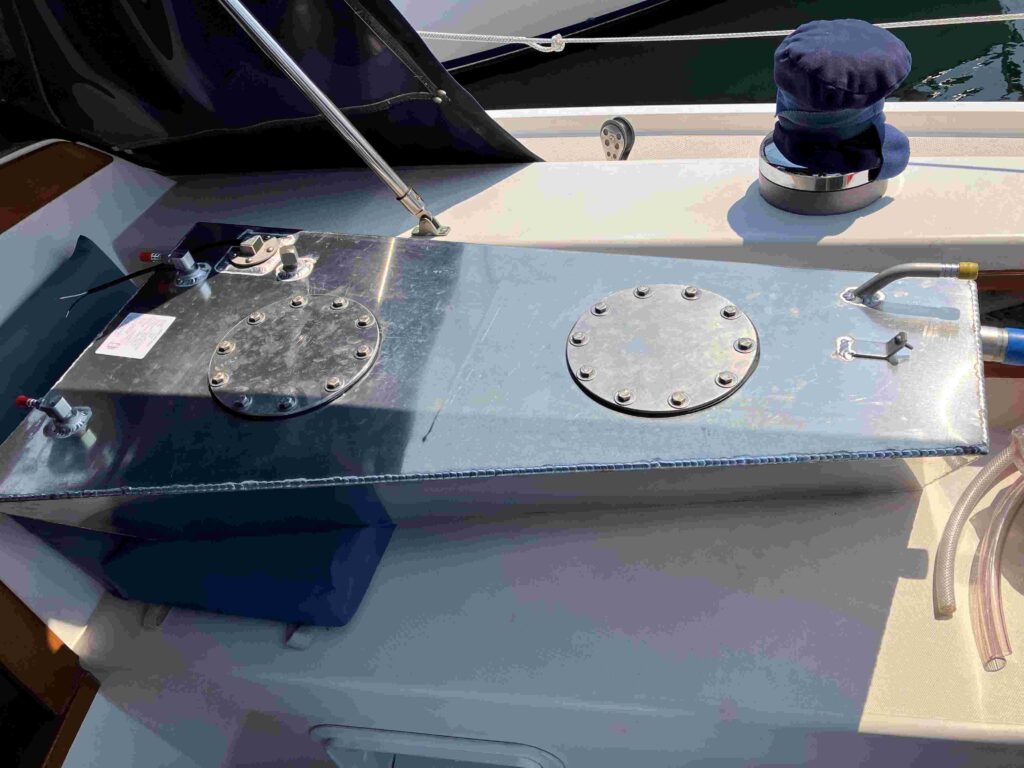
While we were stuck on the dock again, we decided to have our propeller repitched to match the new engine and transmission.
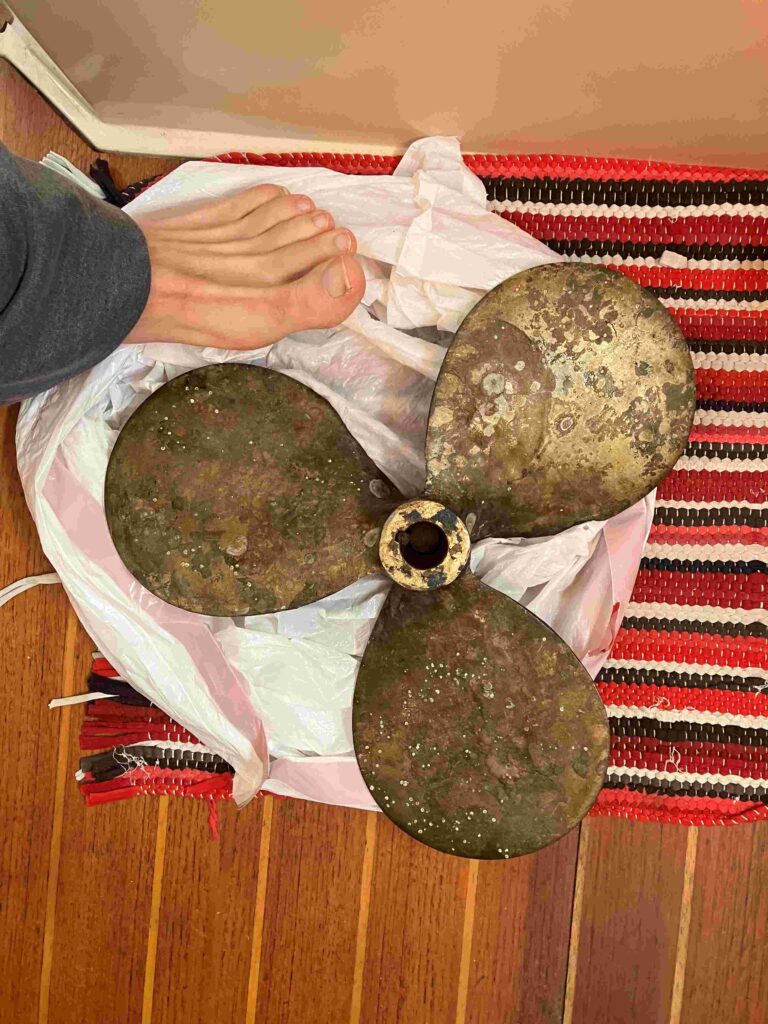
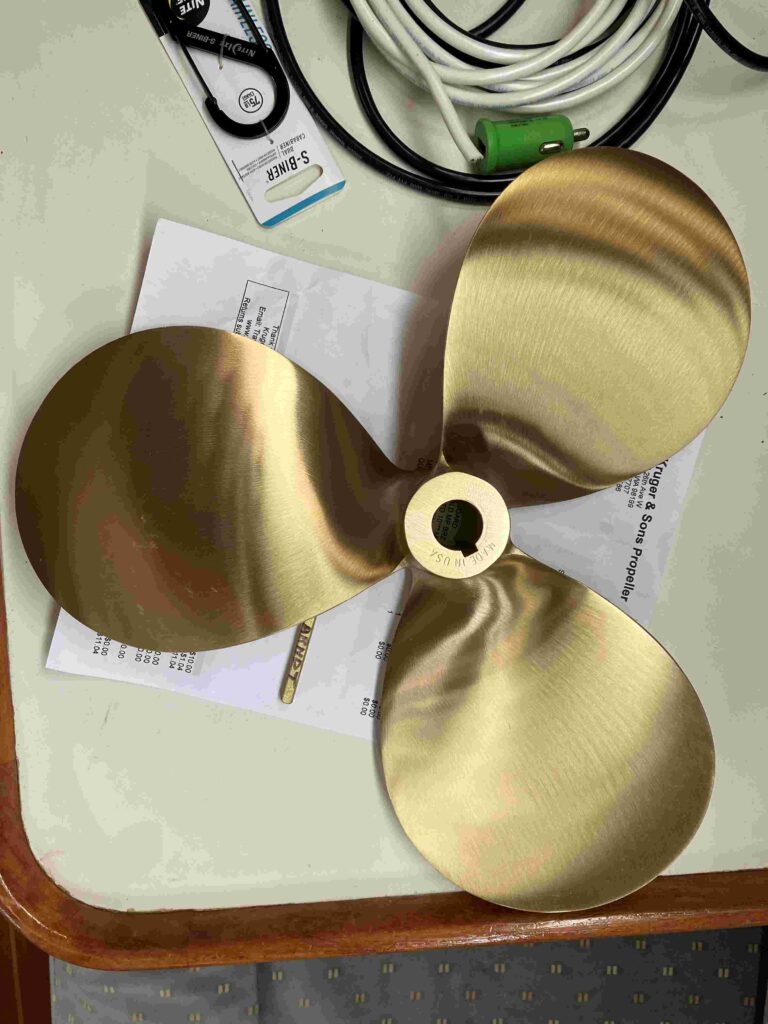
And, just for good luck, we replaced the steering cable. (We had been meaning to do this for a while. Then a dock neighbor with another 1986 Catalina 34 had his steering cable snap while he was out sailing.)
